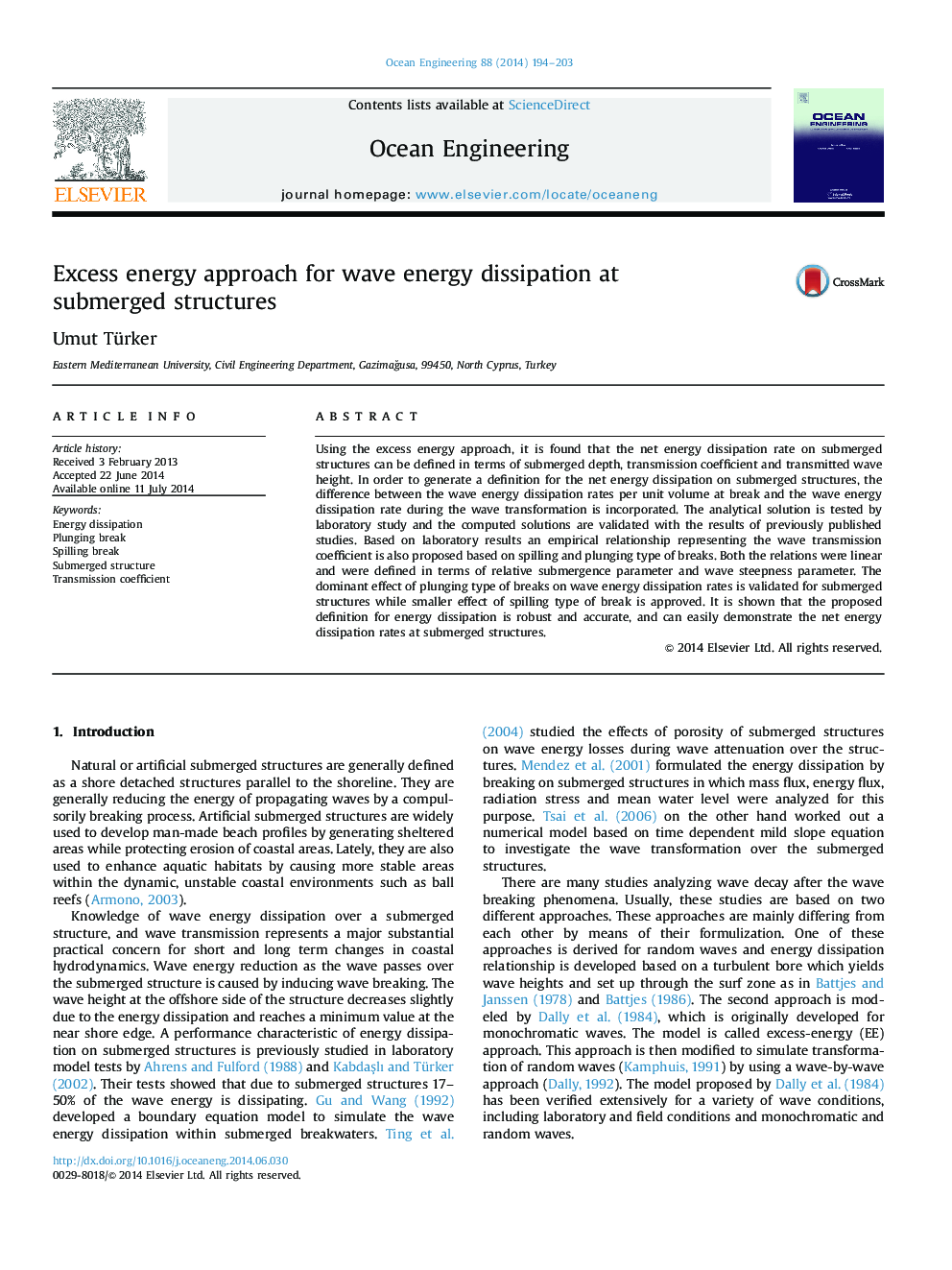| کد مقاله | کد نشریه | سال انتشار | مقاله انگلیسی | نسخه تمام متن |
|---|---|---|---|---|
| 1725614 | 1520702 | 2014 | 10 صفحه PDF | دانلود رایگان |
• Excess energy approach is used to define energy dissipation at submerged structures.
• Experiments are performed to validate derived analytical equation.
• Wave transmission coefficient is modified for spilling and plunging type of breaks.
• Analytical solution performed well at plunging types of breaks.
Using the excess energy approach, it is found that the net energy dissipation rate on submerged structures can be defined in terms of submerged depth, transmission coefficient and transmitted wave height. In order to generate a definition for the net energy dissipation on submerged structures, the difference between the wave energy dissipation rates per unit volume at break and the wave energy dissipation rate during the wave transformation is incorporated. The analytical solution is tested by laboratory study and the computed solutions are validated with the results of previously published studies. Based on laboratory results an empirical relationship representing the wave transmission coefficient is also proposed based on spilling and plunging type of breaks. Both the relations were linear and were defined in terms of relative submergence parameter and wave steepness parameter. The dominant effect of plunging type of breaks on wave energy dissipation rates is validated for submerged structures while smaller effect of spilling type of break is approved. It is shown that the proposed definition for energy dissipation is robust and accurate, and can easily demonstrate the net energy dissipation rates at submerged structures.
Journal: Ocean Engineering - Volume 88, 15 September 2014, Pages 194–203
